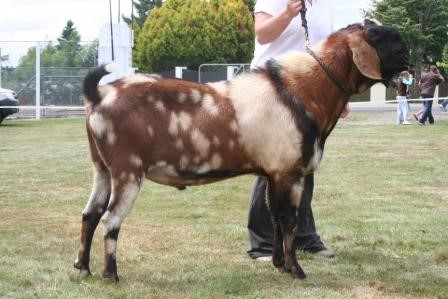In the pastoral landscapes of England, amidst the rolling hills and verdant meadows, the Anglo-Nubian goat stands tall as a testament to the harmonious blending of British, African, and Indian lineage. Developed through careful crossings of British goats with bucks from Africa and India, the Anglo-Nubian emerged as a versatile breed, excelling in meat, milk, and hide production.
With a regal bearing and graceful stature, the Anglo-Nubian goat exudes an aristocratic air, its lineage tracing back to the sun-drenched lands of Nubia in northeastern Africa. Imported goats from Africa, Arabia, and India, renowned for their hardiness and desired characteristics, were crossbred with the common short-haired does of England, culminating in the creation of the Anglo-Nubian breed prior to 1895.
Characteristic features of the Anglo-Nubian include long, pendulous ears that gracefully frame its proud visage, while a distinctly Roman nose lends an air of nobility to its countenance. Adorned in coats of solid or parti-colored hues, ranging from black and red to tan, with white markings adorning some individuals, the Anglo-Nubian's short-haired coat exudes elegance and refinement.
Though not the heaviest milk producer, the Anglo-Nubian goat boasts a high average butterfat content, making it a prized asset in dairy operations. With a breeding season longer than that of Swiss breeds, Anglo-Nubians offer the advantage of year-round milk production, particularly well-suited to hot climates where their adaptable nature shines.
The capacious udder of the Anglo-Nubian, though sometimes more pendulous than that of Swiss breeds, ensures a steady supply of rich, creamy milk. Mature does stand at least 30 inches at the withers and weigh over 135 pounds, while males reach a minimum height of 35 inches and weigh at least 175 pounds, embodying strength and vitality in their robust frames.
In the tapestry of goat breeds, the Anglo-Nubian goat stands as a distinguished symbol of elegance, versatility, and enduring heritage, enriching agricultural landscapes with its noble presence and valuable contributions to milk and meat production.
